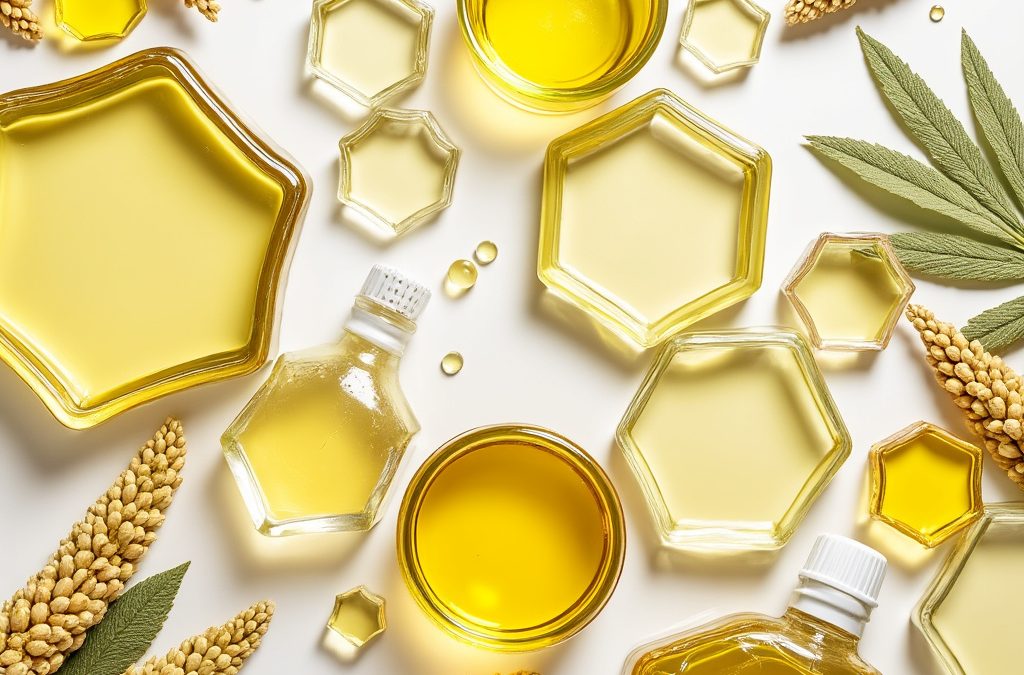As a consumer increasingly conscious about what I put into my body, I’ve taken to scrutinizing food labels, and one ingredient that I recently reacted to and caught my eye is soy lecithin—a seemingly innocuous emulsifier present in an array of foods. My investigation into its production process has led me to a conclusion that might not be widely discussed: the possibility that this common additive could harbor small amounts of hexane residue, a solvent used in its extraction from soybeans.
The Hidden Hexane
Soy lecithin is extracted from soybean oil, which involves the use of hexane to separate the oil from the soybean flakes. Industry standards dictate that hexane should be removed after extraction, but my deeper dive suggests that traces might remain. The implications of this are significant. Hexane, while an effective solvent, is not without its dangers. As a neurotoxin, it has the potential to adversely affect the nervous system, causing symptoms ranging from mild dizziness to peripheral neuropathy in cases of significant exposure.
Why It Matters
While regulatory agencies set limits on hexane residues in food, these limits are based on assumptions of safety at low levels. However, my concern is that the cumulative effect of consuming these minuscule amounts over time, particularly for those with a diet rich in processed foods containing soy lecithin, might not be as benign as commonly thought. This personal scrutiny has led me to question whether we should be more vigilant about such residues, especially in an era where “clean eating” and minimizing chemical exposure are becoming more prevalent.
Hexane in Seed Oils
A Broader Concern: It turns out that hexane’s use isn’t limited to soy lecithin. It’s also employed in the production of other seed oils like canola, corn, and sunflower. This realization extends my personal concern to a broader spectrum of dietary staples, prompting a reevaluation of what we consider “safe” in our daily consumption.
Choosing Safer Oils – For those sharing my concern, here’s guidance on selecting oils less likely to contain hexane:
- Cold-Pressed Oils:** These oils are produced by mechanically pressing seeds or nuts at low temperatures, avoiding chemical solvents entirely. Olive oil, avocado oil, and flaxseed oil are prime examples.
- Expeller-Pressed Oils:** Similar to cold-pressed but can involve heat, yet still solvent-free, offering oils like peanut or sesame oil.
- Organic Oils:** While not automatically hexane-free, organic labeling often implies the use of natural extraction methods. Always check for specifics on production.
Each of us needs to understand what we are putting into our bodies. We should question, research, and perhaps choose foods produced with methods that align more closely with our health and wellness goals, even if these concerns are not yet widely recognized. We must also strive to come up with better ways to produce these products. I believe that even minuscule amounts of toxins can have significant implications for our health.
Further Reading:
Maximilian Behr, Jörg Oehlmann, Martin Wagner, Estrogens in the daily diet: In vitro analysis indicates that estrogenic activity is omnipresent in foodstuff and infant formula, Food and Chemical Toxicology, Volume 49, Issue 10, 2011, Pages 2681-2688,ISSN 0278-6915, https:/www.sciencedirect.com/science/article/pii/S0278691511003620

Linda Wulf
My journey with CNS lymphoma not only shaped my perspective on health but ignited a mission to uncover and educate about the myriad chemicals we encounter every day.










